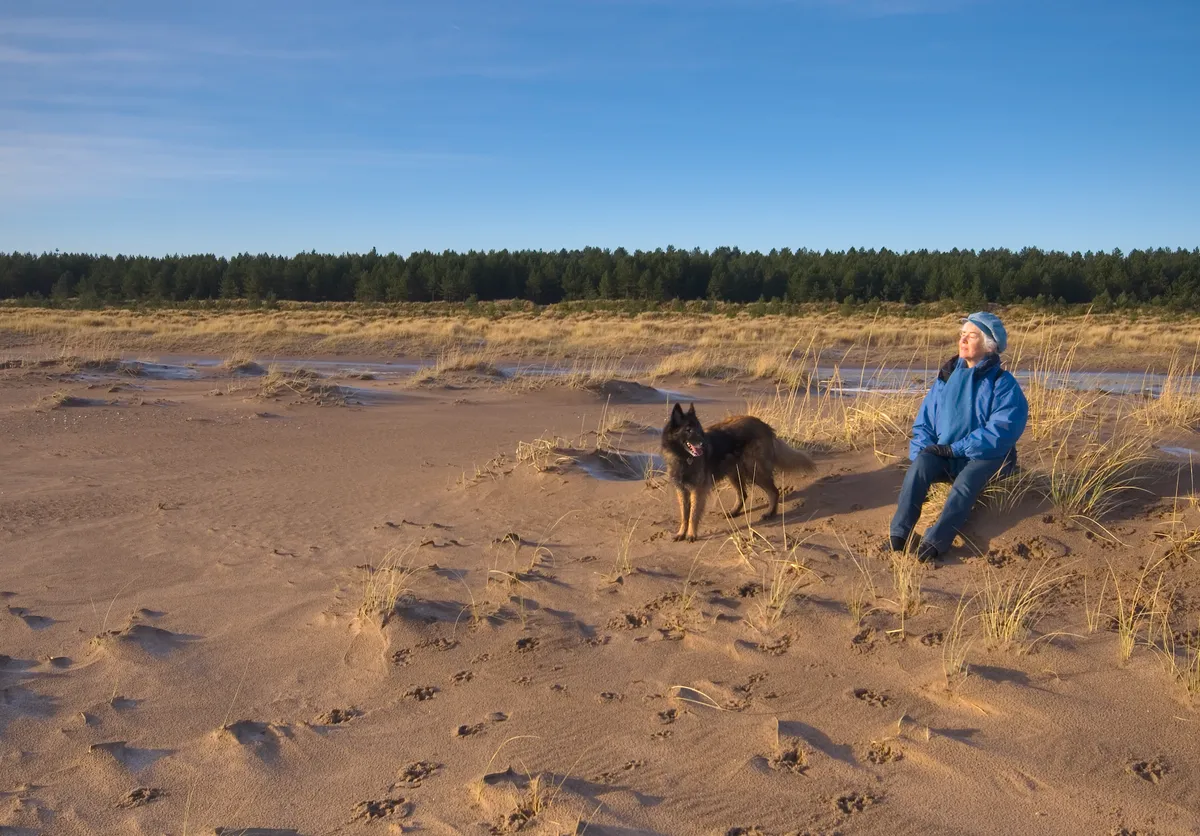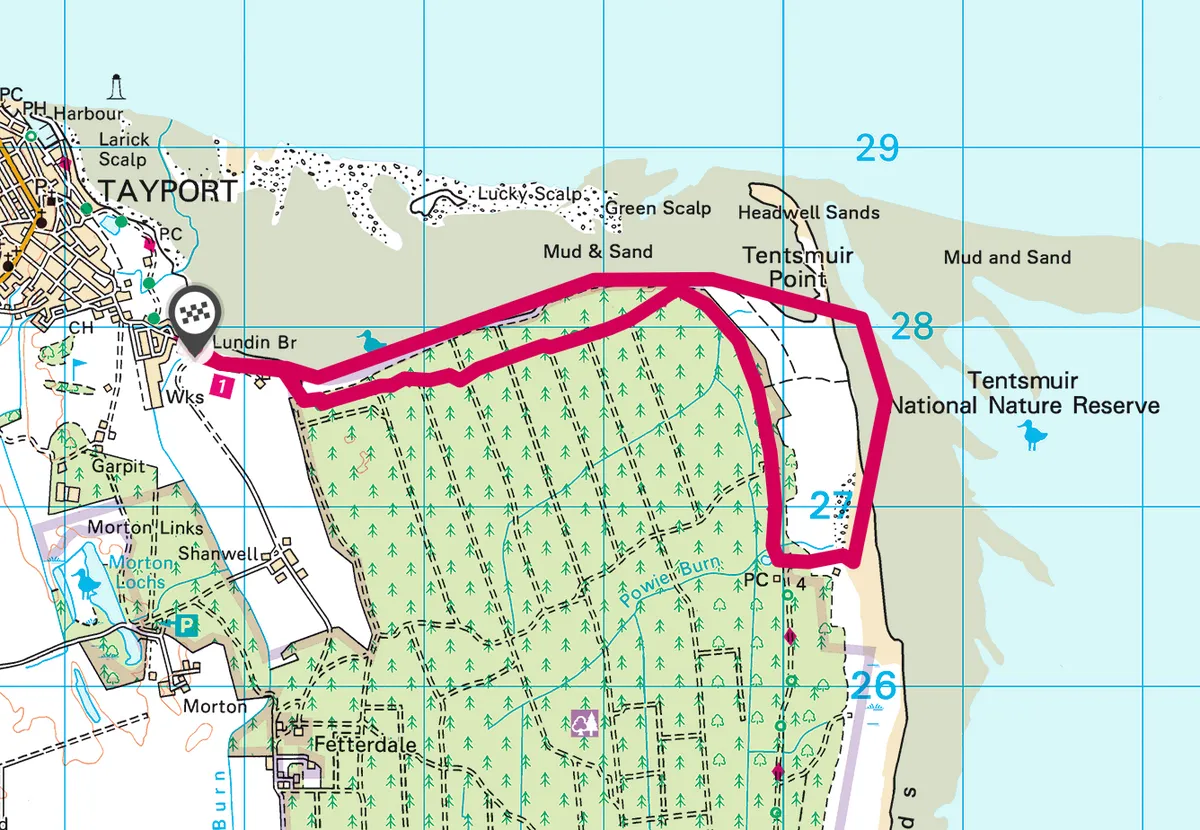The Tay Estuary is the perfect environment for sea eagles. Although many people associate the bird with Scotland’s rugged west coast, elsewhere in the world they prefer wetlands and estuaries where shallow waters offer a rich source of food. Last year the bird was reintroduced to eastern Scotland, with the release of 15 chicks who quickly spread their wings and found new territory in areas like Tentsmuir Forest.
This vast tract of Scots and Corsican pine covers 1500 hectares, bordering the Tay Estuary and the North Sea. Separating the river from the ocean is Tentsmuir Point, a national nature reserve that attracts eider ducks, pink-footed geese and oystercatchers – and now the sea eagle has added its name to the list.

Eagles at Tentsmuir
The return of the sea eagle to Scotland is one of the great conservation success stories. The last native bird was shot on Shetland in 1918, but in the 1970s the raptor was reintroduced and experts estimate there are now 200, most roosting in the isolated western isles. Thanks to ongoing work, Britain’s largest bird of prey is now soaring over east coast waters too.
You may also like:
Tay Estuary walk
6.4 miles/10.3km | 4 hours | easy–moderate
1. Start
From Lundin Bridge, head east on a track that passes a derelict meteorological station. As the way curves right, below a wartime pillbox and into Tentsmuir Forest, carry straight on along a beach path that runs parallel with a line of concrete blocks installed during the Second World War to prevent enemy tanks coming ashore. They remain a constant companion as you follow the shoreline, the expansive mudflats offering rich pickings for waders and seabirds. Look for sea eagles here. The raptor has brown body plumage, a pale head and neck and white tail feathers. Some sightings have involved the eagles being harassed by gulls or crows so keep an eye out for such behaviour.
2. Sandy ways
At Green Scalp a sandy path offers a pleasant detour from a muddy stretch of foreshore, and the way continues to reach the entrance to the nature reserve. Pass though a gate and walk straight on until you hit Tentsmuir Sands.

3. Golden sweep
On a sunny day there are few better places to be than Tentsmuir Sands. The beach is truly magnificent, with fine golden sand sloping down into the shimmering blue water.
Turn right and head south. The sandbanks are popular with grey and common seals. Look out for an observation post (a green cabin on stilts) at the top of the beach and head for this. The beach here is one of the best places to spot seals.
4. Inland return
Leave the beach at the cabin and head inland. The path enters Tentsmuir Forest at a gate just short of a 19th century ice house, built to store salmon netted on the coast. The stone structure is now home to a colony of natterer’s bats. Join the forest road, turn right and head north. Now stay on the main track and it will lead you back to Lundin Bridge.
Tay Estuary map
Tay Estuary walking route and map

